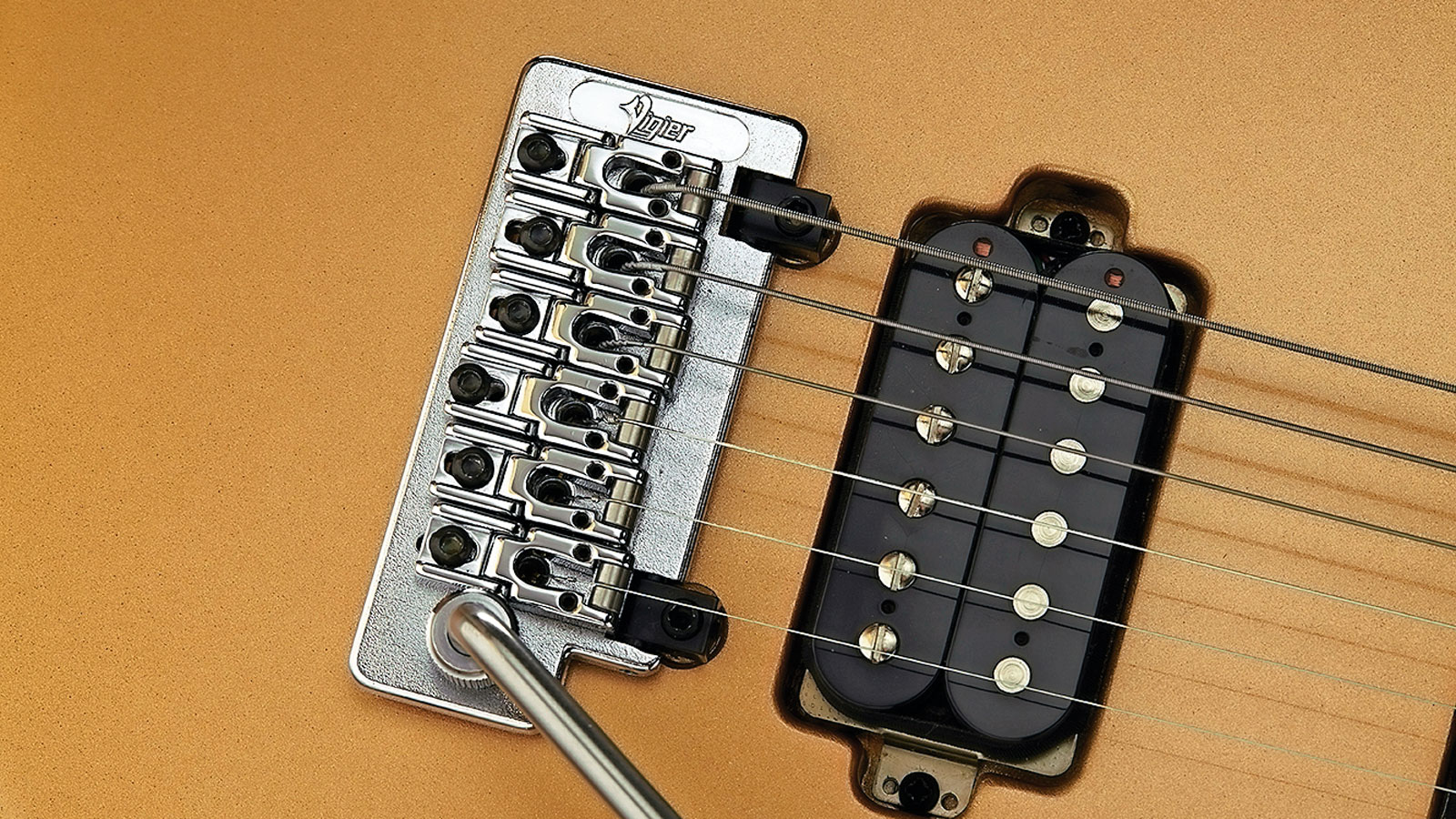MusicRadar Verdict
State-of-the-art solidbody with impeccable build, playability and versatile sounds.
Pros
- +
Professional build and playability. Full of different tones. Attention to detail.
Cons
- -
The expense.
MusicRadar's got your back

Vigier Excalibur Thirteen

Headstock

Buttons

Pickups

Controls

Neck
The long-running Excalibur, introduced in 1991, is a much more mainstream vision than many of Vigier's earlier designs, but it's the guitar that has put the brand on the international map: a complete redesign of the double- cutaway bolt-on.
The Thirteen (introduced in 2013 and retained for this year) came from a desire, says Vigier's UK distributor Ben Whatsley, "to develop an Excalibur that is very versatile and would be an ideal choice for players of any style or genre, providing an extremely stable and easy-to-use-guitar."
"Attention to the smallest detail is everywhere"
It may sit in the higher levels of the Excalibur range, which starts with the Indus at £1,459, but the Thirteen is honed to perfection, not a hair out of place, reflecting Vigier's long-standing obsession with ultimate quality and performance.
The body is two-piece centre-joined French alder, slimmer in depth than the Fender blueprint at 41mm. Its skinnier horns provide maximum access to the upper frets - all 24 of them: medium gauge, mirror-polished stainless steel on the 300mm radius'd maple fingerboard.
The slightly flat-backed, slim depth 'D' profile neck (19.5mm at the 1st fret, 22.8mm at the 12th), combined with very vintage-like rounded edges and a satin finish, feels exceptional.
Very few makers go for a graphite-reinforced neck without a truss rod, but Vigier believes in its 10/90 neck construction - it's not a gimmick and was introduced back in 1988.
"For me, the graphite [reinforced] neck is better," says Patrice. "It is very stable. I don't say we don't have any problems, but they're very few." It's interesting, too, that the graphite centre spine is installed from the back; the fingerboard, like an old Telecaster, is simply the face of the neck.
Want all the hottest music and gear news, reviews, deals, features and more, direct to your inbox? Sign up here.
Attention to the smallest detail is everywhere. There are the knurled oversized locking wheels on the Schaller dual-height tuners; those ball-end string retainers; the Teflon string guide (not glued, so changing to a bigger string gauge involves just swapping it for one with wider grooves).
Then there's the hardened steel zero fret (again, easily replaced if any wear creates slight grooves); the direct-mount humbuckers with factory set pole-piece adjustments; the bolted-into-metal-insert strap buttons; the micro-sized kill switch.
And that's not to mention the needle point ball-bearing pivot of the adapted Schaller vibrato with lockdown and height-adjustable saddles. Even the side-placed jack output is recessed in a hole that's angled towards the base strap button, for those of us who secure our lead under the strap.
Feel & Sounds
To coin a cliché, here's a guitar that virtually plays itself. Set up with 0.009 to 0.042 gauge strings and a string height below the factory specs, you'll be racing all over the 'board in a nanosecond.
Some players may need a little more fight, but adjustments are easy via the vibrato's two height-adjustable pivots. The vibrato is very stable unless you go completely nuts, and even then only the low string's pitch wobbled a bit.
Overall, intonation is scarily good and there's a superb, balanced ring and bright acoustic resonance and sustain. There is a slightly audible ping on low-fret, plain string bends, where we suspect there's a slight groove in that zero fret, but it certainly doesn't amplify when plugged in.
"This model is a stupidly well made and thoroughly professional workhorse"
The five-way switch selects bridge humbucker, screw-coil of the bridge, slug-coil of bridge with screw-coil of neck (hum- cancelling), screw-coil of the neck, and neck humbucker. With the volume and tone and a versatile amp and pedalboard, it gives you immense choice.
The fact that there's a kill switch onboard leads you to believe it's a modern rock/shred dream, and we doubt too many of you playing in that style would be disappointed - but there's a lot more here than that pigeon-hole.
Certainly, the bridge is ballsy and crisp, but it suits big, bold cleans right though to meltdown distortion.
The more vintage-output neck pickup has an older, woodier voice and it's a good contrast, while the pickup mix is seemingly that modern generic 'Strat', which never quite sounds like the real thing but is great for modern chord voicings and lashings of modulation and delay.
However, the volume control here is crucial to unleashing some much older traditional sounds. Stick to the middle three positions and back off the tone control and it actually sounds way more, well, vintage-y. In fact, the more time we spend with this guitar the more sounds we find - the mark of a good instrument? We think so.
If you see your instrument as a tool to do a professional job, and not a too-cool-for-school accessory, Vigier will probably already be on your radar. This model is a stupidly well made and thoroughly professional workhorse that by design is genre- and style-spanning. If you haven't tried one, we suggest you do.
Dave Burrluck is one of the world’s most experienced guitar journalists, who started writing back in the '80s for International Musician and Recording World, co-founded The Guitar Magazine and has been the Gear Reviews Editor of Guitarist magazine for the past two decades. Along the way, Dave has been the sole author of The PRS Guitar Book and The Player's Guide to Guitar Maintenance as well as contributing to numerous other books on the electric guitar. Dave is an active gigging and recording musician and still finds time to make, repair and mod guitars, not least for Guitarist’s The Mod Squad.
